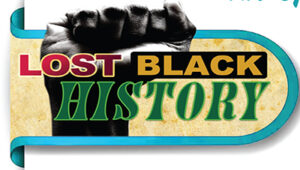By Don Valentine
Chicago Cubs player, Ernie Banks said, “It’s a beautiful day for a ballgame, let’s play two!” We have been playing organized baseball since the 1800’s. The first HBCU game was in 1887 when Southern University and Straight University faced off in New Orleans. The sport was quickly added to the roster of all HBCU campuses. The teams earned the affectionate moniker “Black College Nines.” By the end of the 1800’s Blacks were playing on military teams, college teams, and company teams. HBCU baseball generated a number of stalwart men for the Black community. From the book The College Nines this list included: “NAACP executive directors James Weldon Johnson and Walter White, community leaders, educators and college presidents, as well as Negro League all-time greats like Buck O’Neil, Dave Malarcher, Hilton Smith and Willie Wells, and Major League Baseball Hall of Farmers like Lou Brock and Andre Dawson.”
We were taught in “His-Story” that Jackie Robinson was the first Black man to play in Major League Baseball. The “Real-Story” as annotated by Sports Illustrated, “In 1884—63 years before No. 42 stepped into a Brooklyn Dodgers uniform—Moses Fleetwood “Fleet” Walker suited up for 42 games with the Toledo Blue Stockings, a professional club in the American Association (now the American League)…” Bud Fowler should be mentioned, because in 1848 he became the first player to integrate White teams. He played in the all White minor league team of the Toledo Blue Stockings.
Jim Crow chicanery led to a secret agreement to not sign any more Black players. That void was filled with the nascent Negro League. The Negro League Baseball Museum cited, “Black players formed their own units, ‘barnstorming’ around the country to play anyone who would challenge them.” The movie Bingo Long and the Traveling All Stars was based on those teams. In 1920, an organized league was formed under the helm of Andrew “Rube” Foster—a former player, manager, and owner for the Chicago American Giants.” Rube was a passionate visionary. After the first World War he took advantage of the “Great Migration” to unite an all-Black group of owners to create the Negro National Leaguge. The league had eight teams: The Chicago American Giants, the Chicago Giants, the Cuban Stars (New York), the Dayton Marcos, the Detroit Stars, the Indianapolis ABC’s, the Kansas City Monarchs, and the St. Louis Giants.
At its peak, game Black Churches would move their Sunday service time back an hour so that fans could attend the game. They would go to the game in their church clothes, hence the idiom “Dressed to the Nines.” The pervasive talent of the Black players and their popularity forced an attrition into the Majors. The Negro league had always been on a slippery financial slope and that was the final straw. To learn more read Kadir Nelson’s We are the Ship: The Story of Negro League Baseball.


